Defining a new eco-urban district for the University of Maryland, the site design for A. James Clark Hall integrates principles from the fields of engineering and biology to support community and ecosystem health. The site design complements Clark Hall’s position as the campus bioengineering center for teaching and research, showcasing innovative blue-green infrastructure and emphasizing campus gathering spaces.
Through a series of open spaces and pathways, the site affords students, scientists and medical professionals opportunities to come together to develop the next generation of healthcare. The site design intermingles engineered walkway compositions with lush zones of naturalized planting communities that highlight biological applications. Numerous areas of the site provide respite for faculty, staff and students. A generous lawn panel, inviting seat walls, and a custom designed “social table” all facilitate informal interactions and mental recharge. By focusing on local and sustainable materials, the site design at Clark Hall ensures that the intellectual footprint of the project extends far beyond its environmental footprint.
Located far from the historic campus core, the building and site design establish a novel precedent for future campus growth. Taking cues from the adjacent wetlands, stream buffers and waterways, the site design promotes eco-urban principles, recognizing the project’s position within both an urbanizing campus and complex natural ecosystem. By capturing rainwater in micro-bioretention areas, the landscape minimizes point source discharge of stormwater to nearby Campus Creek. As the district develops, the project will also accommodate the future implementation of complete streets, extending multiple transit modes into the site’s edges.
University of Maryland, College Park
Maryland ASLA Honor Award
SITE PLAN | Replacing what was previously surface parking, A. James Clark Hall’s site design establishes a novel precedent for future eco-urban growth at the University of Maryland. Multiple gathering areas provide communal rest spaces for students, faculty, and employees, with naturalized plantings incorporating the character of adjacent streams and wetlands.
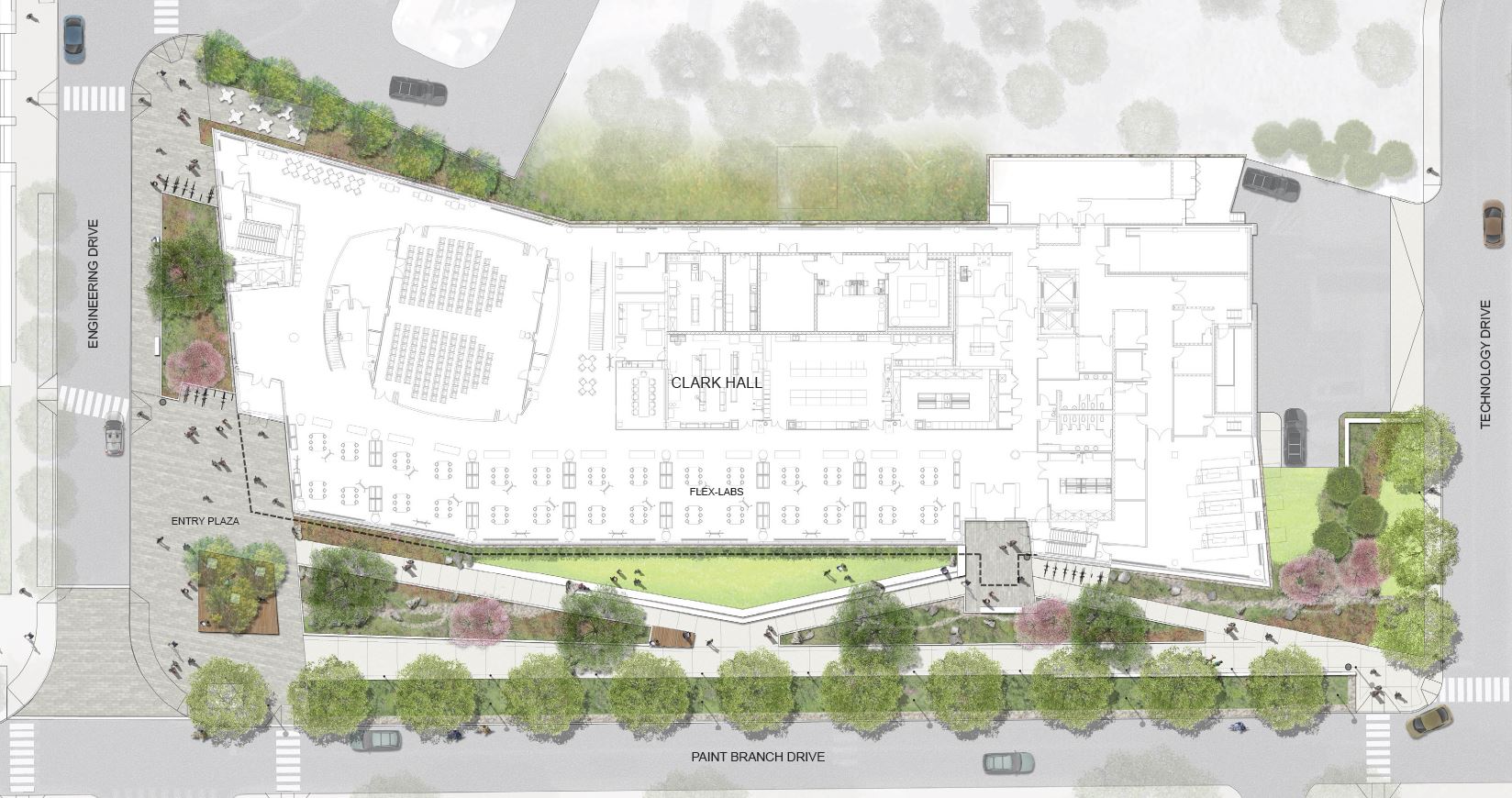
NEW CONNECTIONS | A. James Clark Hall is home to the University of Maryland’s bioengineering center for teaching and research. The site affords students, scientists and medical professionals opportunities to come together to develop the next generation of healthcare. This re-development project serves as the precedent for the campus’s newly envisioned eco-urban district.
WATERWAYS & PEOPLE | The project is positioned adjacent to the natural waterways of Campus Creek and Paint Branch as well as College Park’s urban corridor along Baltimore Avenue. The location at the intersection of these two systems made the project an ideal candidate to be a model for the campus’s eco-urban district.
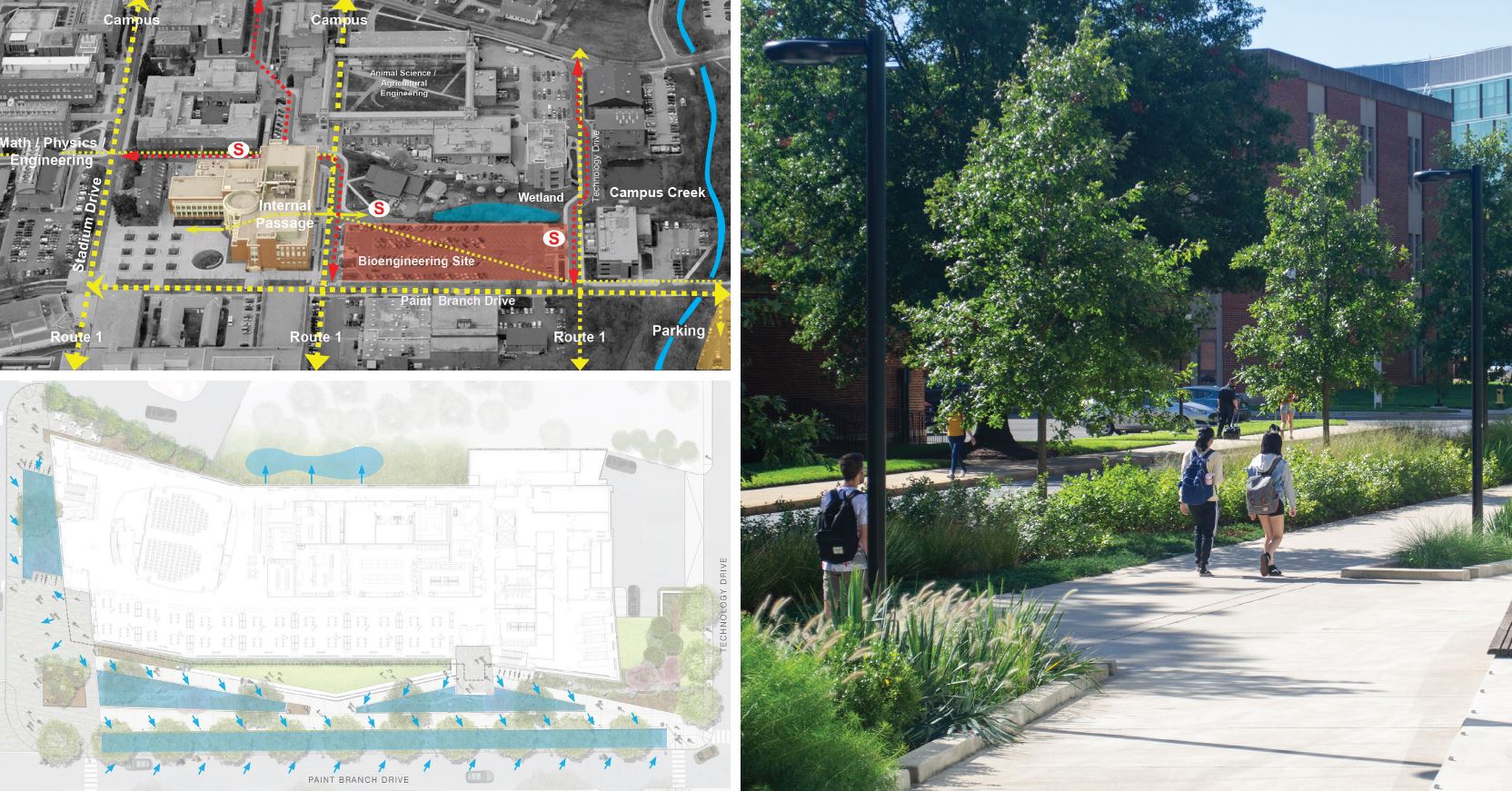
STORMWATER MANAGEMENT | Stormwater management treatment areas are a showcase of green infrastructure, visible from on-site campus circulation as well as from inside the building.
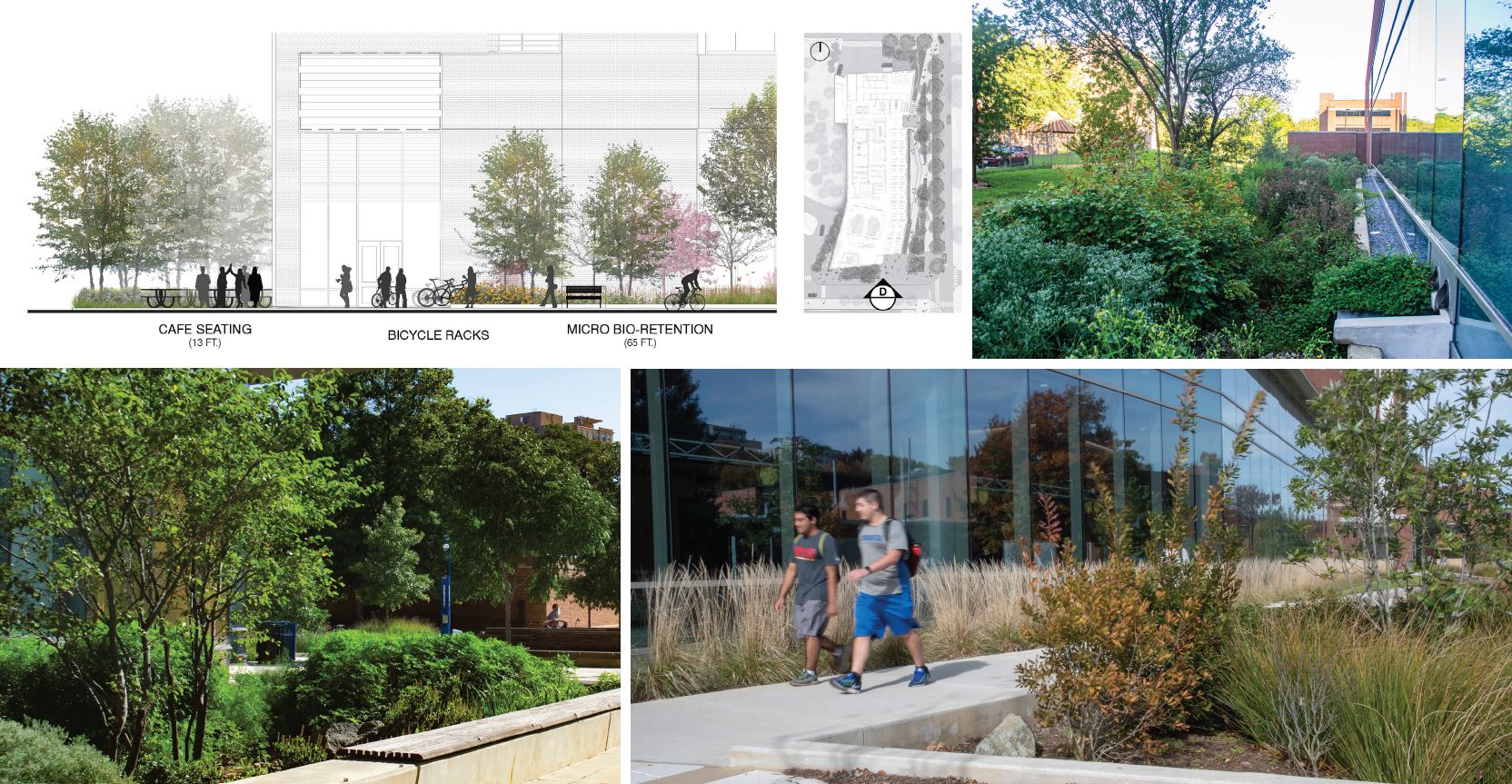
COMPLETE STREETS | As part of the university’s eco-urban district, the site design at Clark Hall will grow to incorporate complete streets, integrating pedestrian, bicycle, and vehicle lanes.
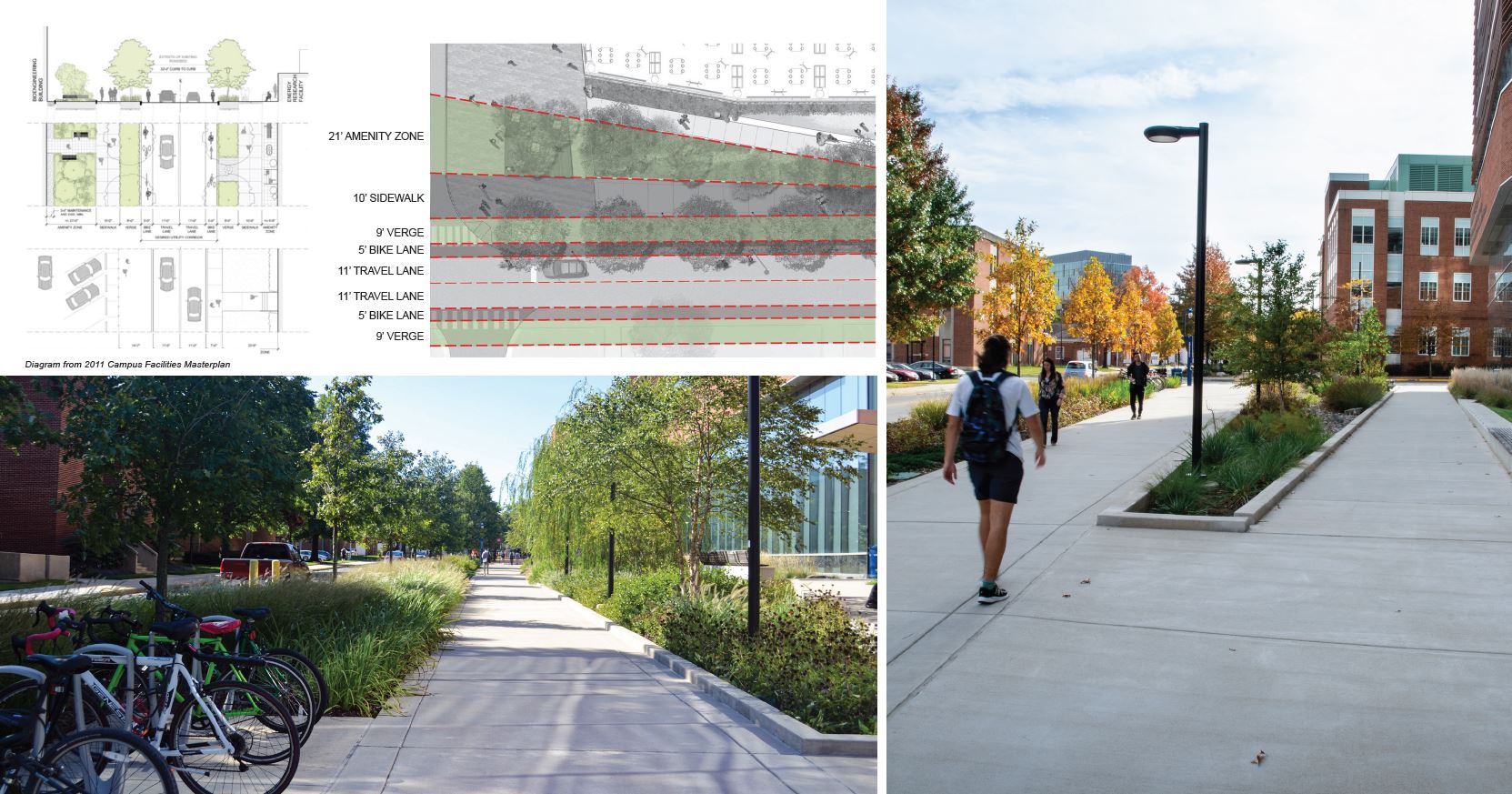
SHOWCASE & BREATHING SPACE | Flex-labs on the building’s first floor invite a “press-your-nose-against-the-glass” experience to passersby. While the inner-workings of the flex-lab engage those on the outside, a lawn panel provides a breathing space for students working inside after hours. Engineered planters featuring plant communities integrate the character of nearby streams into the site.
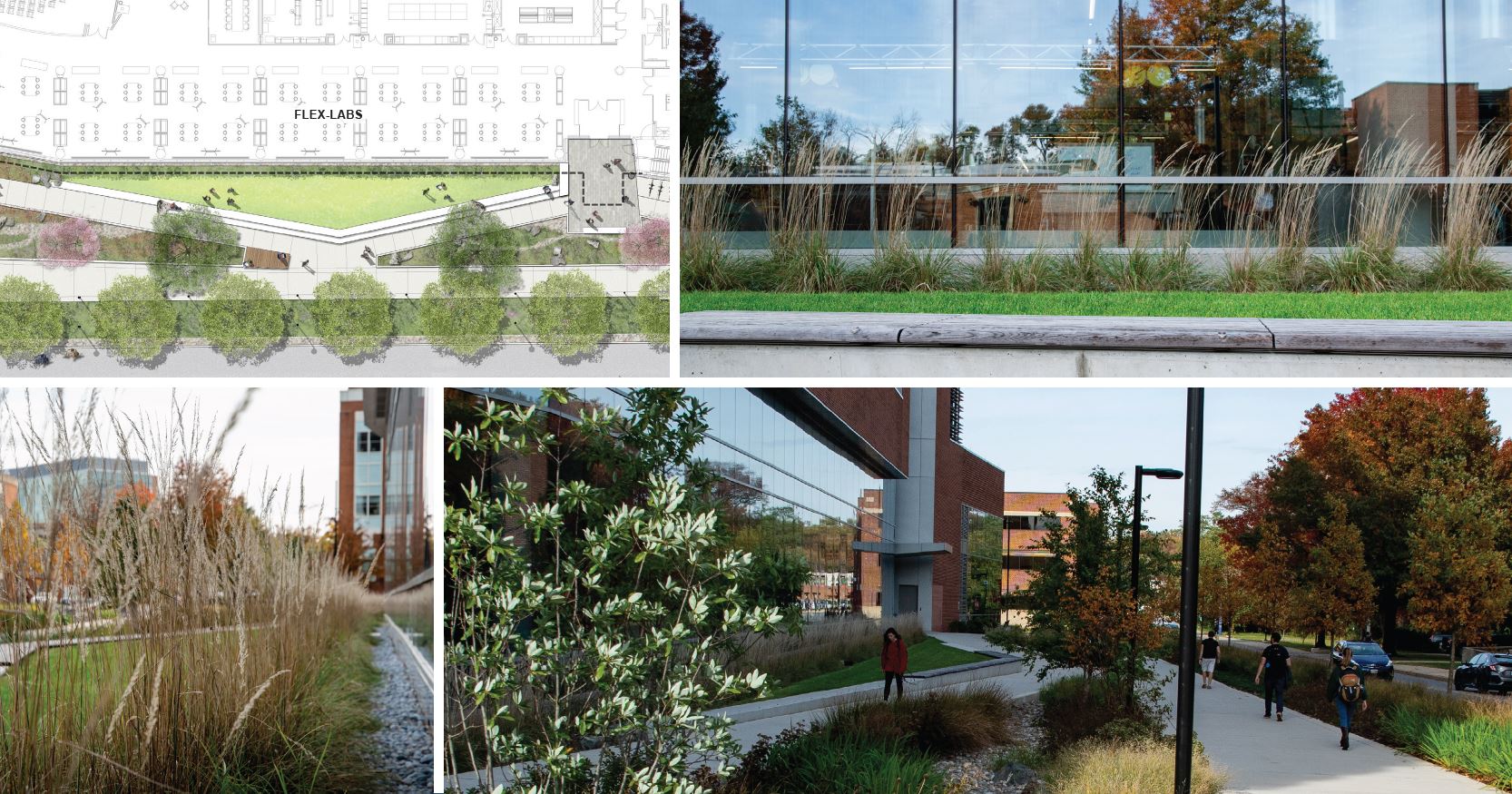
NATURAL PLANT COMMUNITIES | The project provides students the opportunity to interact with local native species. Plant palette combinations use companion species for optimum establishment, long-term survivability and a smaller maintenance footprint.
LOCAL/SUSTAINABLE MATERIALS | Thermally modified ash is used in site furnishings as a sustainable alternative to exotic hardwoods. Light colored concrete unit pavers reduce the plaza’s impact on urban heat island effect. Natural boulders scattered throughout the site are locally sourced to convey an indigenous quality to the landscape.
SEASONAL CHANGE | Native plants add movement, texture, and color to the landscape that change throughout the seasons.
ENTRY PLAZA & ILLUMINATION | Anchoring the site is an entry plaza where exchange of information and ideas is fostered in an outdoor setting. The 24/7 nature of Clark Hall means it shines into the night. Landscape lighting inspires safety and activity after-hours.